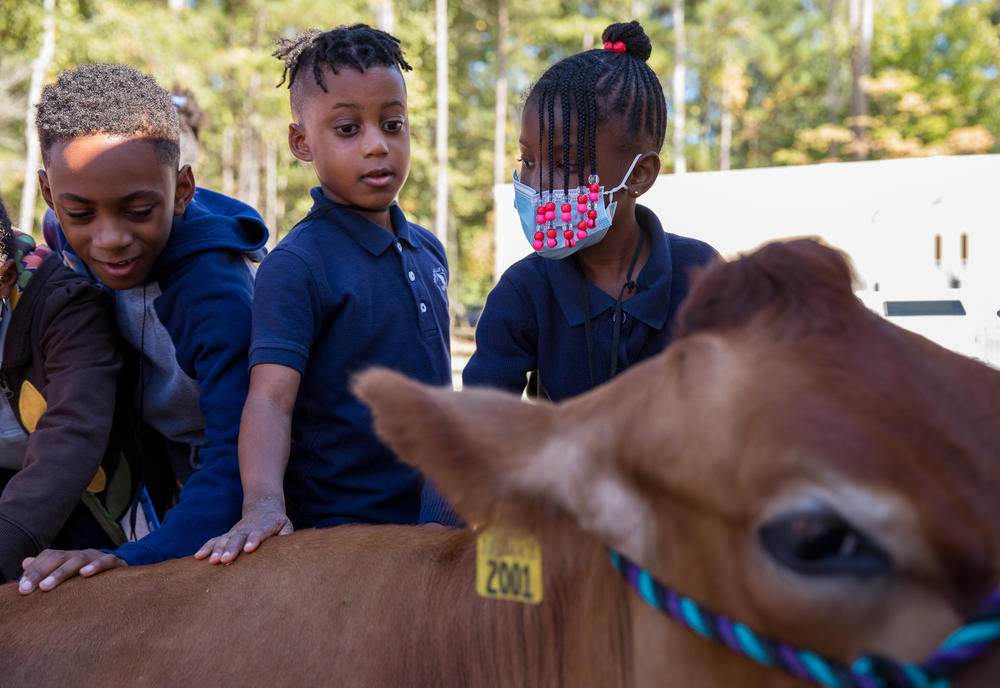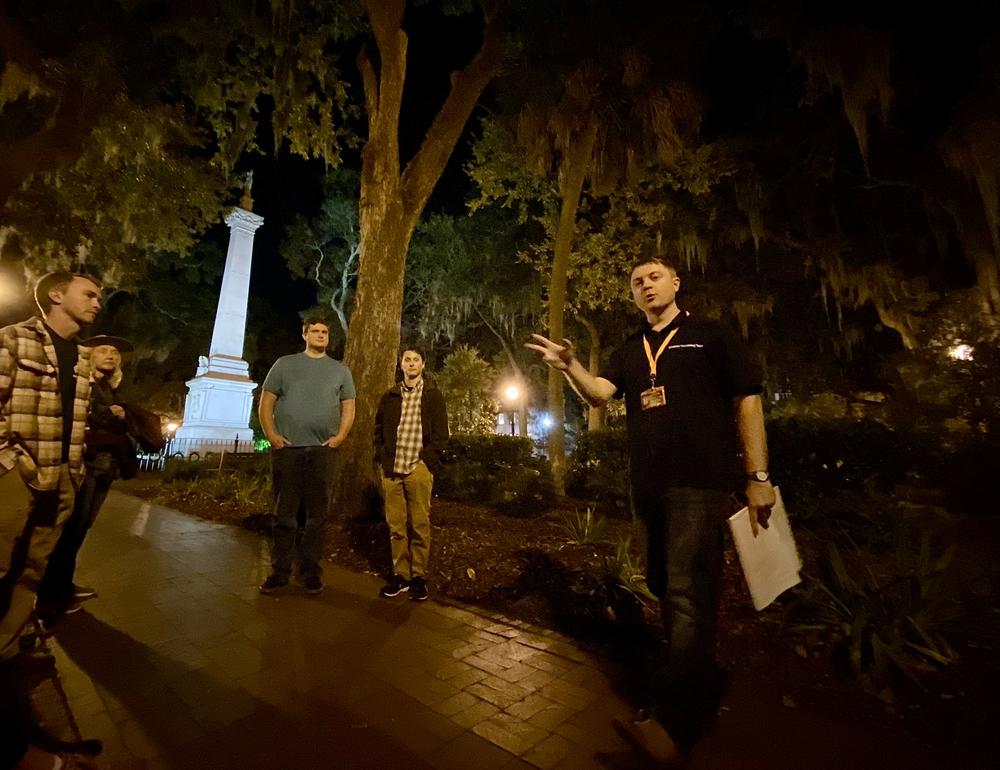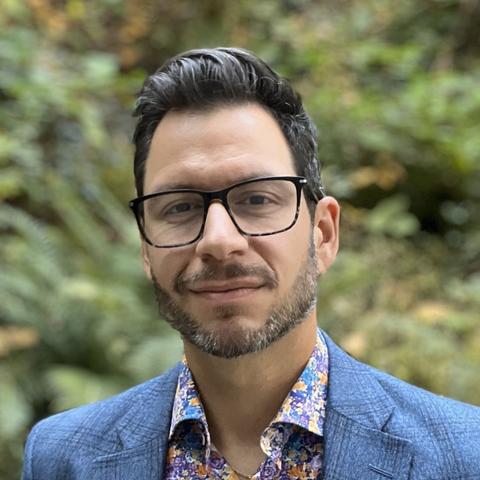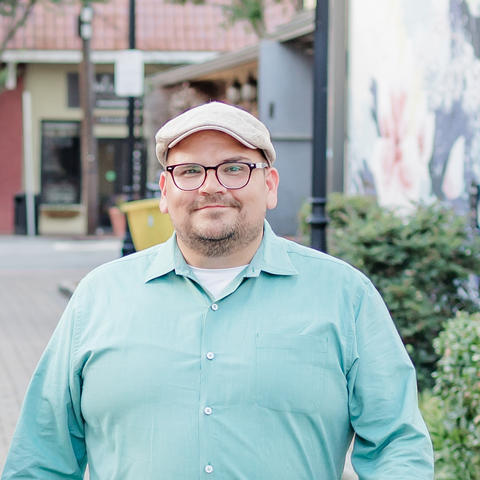
Section Branding
Header Content
Georgia Today: Virtual OB-GYN visits, FDA using blockchain tech, Savannah's dark history
Primary Content
LISTEN: On the Monday Jan. 2 edition of Georgia Today: Virtual OB-GYN visits, the FDA is utilizing blockchain technology, and Savannah's dark history.

Peter Biello: Welcome to the new Georgia Today podcast from GPB News. Today is Monday, Jan. 2, 2023. This is the first episode of the new year. Happy New Year to you. I'm Peter Biello. Coming up on today's episode: Will an online maternal health care program help mothers across the state? One Atlanta OB-GYN practice is looking to find out. The FDA is using blockchain technology to track your food from farm to table. And we'll revisit a story we really enjoyed: the story of how Savannah's scariest stories aren't about ghosts. These stories and more are coming up on Georgia Today.

Story 1
Peter Biello: An Atlanta OB-GYN practices piloting an online maternal health care program. Virtual prenatal care visits could make care more accessible for patients in and outside metro Atlanta. GPB's Ellen Eldridge has more.
Ellen Eldridge: Mothers-to-be can now use telehealth after the 20th week of pregnancy and enhanced post-delivery monitoring kits help determine risks like pre-eclampsia and depression. Dr. Jill Purdie is the medical director at Northside Women's Specialists. She says telehealth care offers advantages over traditional office visits.
Dr. Jill Purdie: Data is showing that we're not missing anything, and in fact, we may actually be picking up on things sooner because we — our patients do have the ability to check their blood pressure, their weight and their fetal heart rate at home, and they're actually doing that more often than we would see them in the office.
Ellen Eldridge: The only downside Purdie sees to online appointments is a lack of face-to-face connection when the camera isn't working. For GPB News, I'm Ellen Eldridge.
Story 2
Peter Biello: The Food and Drug Administration, which regulates nearly 80% of the nation's food supply, is turning to blockchain technology to track food from farm to table. GPB's Sofi Gratas reports.
Sofi Gratas: According to the FDA, tracking contaminated foods via blockchain will take about a week compared to the average month under the old model. The new tracking system is the latest mandate under the 2011 Food Safety and Modernization Act. Thousands of people are hospitalized every year with food-borne illnesses, and billions of dollars are spent on associated medical costs. The updated food traceability list includes soft cheeses, tomatoes, deli salads, nut butters and other items more often associated with disease outbreaks. Those items will be assigned lot codes that can track food digitally. Harvesters, processors, manufacturers and others in the food chain have three years to start complying with the new recordkeeping system, effective next month. For GPB News, I'm Sofi Gratas in Macon.

Story 3
Peter Biello: As we look back at some stories you might have missed in 2022, we'll learn how students in metro Atlanta schools got the chance to mingle with barnyard animals and learn about food production as part of a new USDA initiative to get young Georgians interested in agriculture. GPB's Riley Bunch reports.
Riley Bunch: Tuesday was not a typical day at Chattahoochee Hills Charter School. Students from kindergarten through eighth grade lined up outside to meet some interesting new classmates.
Farmer: How are y'all this morning?
Students: Good.
Farmer: Good. This is Lana. Lana is a Jersey cow. In the United States —
Riley Bunch: Young Georgians got the opportunity to mingle with Lana and a wide variety of other farm animals, from your average goats and donkeys to even a red tailed boa constrictor. They were also sent home with seeds to plant to see if they could grow produce in their own backyards. The event was the kickoff of a new initiative by the USDA to get students interested in urban farming. Arthur Tripp, state executive director for the Farm Service Agency, says immersive programs like this one are imperative for the state.
Arthur Tripp: You know, it's so important for us to bridge that gap so our young people know where their food comes from and hopefully they will play a role in that production in the future.
Riley Bunch: The mobile farm will make stops at schools in both Fulton and Gwinnett counties in the coming weeks. For GPB News, I'm Riley Bunch.

Story 4
Peter Biello: Attorney by day, historical tour guide by night, Brandon Carter skips the ghost stories in favor of things that actually happened throughout Savannah's morbid history. GPB's Benjamin Payne reports.
Benjamin Payne: Walk around downtown Savannah on any given night and you're bound to see people going on ghost tours. No wonder why, as Savannah has a reputation as being one of America's most haunted cities. So much so that the Ghost Tours business has become a sort of cottage industry there, with companies competing to spin the spookiest yarn. But as one local history buff puts it, Savannah has so much dark history that you don't need to make any up.
Brandon Carter: Quick intro: My name is Brandon. I'm an attorney here in Savannah. I'm a former park ranger for the Richmond National Battlefield Park.
Benjamin Payne: Brandon Carter is greeting a group of a dozen or so people in downtown Savannah. They've gathered on Bay Street to embark on a tour, but not just any tour. It's his Savannah Dark History Tour, a new passion project of Carter's that keeps things creepy without falling for tall tales and giving in to ghost stories.
Brandon Carter: I'm not a big ghost guy, so we're not going to talk about ghosts on this. If that's what you were expecting, let me know, and I'm happy to refund you. But what we are going to do is review some original history that I've done: original research. We're going to talk about things that actually happened in Savannah. And when we talk about those things, we're actually going to be where most of those things happened. We're also going to poke some holes in some of those ghost tour myths.
Benjamin Payne: One of the first stops on the tour is Johnson Square. It was the first of the city's iconic public squares to be laid out when Savannah was established in 1733.
Brandon Carter: Savannah was built upon death. And the reason being James Oglethorpe. James Oglethorpe is a member of the House of Commons. He's only 25 or 26 years old as of 1722 when he takes his seat. And I should mention, Oglethorpe himself killed a man less than five months before taking his seat. Oglethorpe was in a tavern in England. He accuses a man beside him of stealing a gold piece — and alcohol factors into a lot of this. So Oglethorpe accuses the man beside him of stealing a gold piece. And the man had not touched Oglethorpe's gold piece. He picks the man so much that the man attacks him and Oglethorpe stabs him and it's ruled self-defense. That's [how] Oglethorpe is able to take his seat. But in 1728, after he's been in Parliament for six years, he has a buddy in Robert Castille. Castille is a fairly well-to-do guy and he writes this really neat, quasi travel-slash-art guide to Europe that goes bust and Castille loses everything and they throw Castille into debtor's prison in London. And Castille will die of smallpox in debtor's prison. And from Castile's death, Oglethorpe comes up with the idea for Georgia. Georgia will be to relieve the economically distressed. It is because, again, point one, of Castile's death that Georgia is born out of death.
Benjamin Payne: Savannah saw a lot of death in 1820. That was when the city was hit by a yellow fever epidemic. Carter says it killed more than 10% of Savannah's population. And unfortunately, it wouldn't be the city's only such yellow fever outbreak.
Brandon Carter: We did have another one in 1854 where even more people died.
Benjamin Payne: To talk about it, Carter takes people outside a brewery that used to house a hotel called City Hotel.
Brandon Carter: The myth is that hundreds of people died in this hotel during yellow fever. Here's your first mythbusting in the evening. This is the only hotel that stayed open in the 1854 yellow fever epidemic. So if anything, this is the place that saved lives. Yellow fever killed over 1,000 people — 1,060 people in Savannah in 1854. It killed 10 doctors, it killed three med students and the Catholic bishop here. Ironically —not even ironically, I should say — sadly during the yellow fever epidemic, a hurricane hit in the second week of September. So not only do you have yellow fever running rampant, now you've got people who've lost homes. People have drowned. It was horrible in Savannah in 1854. They didn't know what was causing it. And things that were blamed for it in 1854 — of course, we now know, of course, it was mosquitoes — but they blamed that there was mud being dredged from the rivers so that bigger ships could get up it. They blamed it on the mud was being piled up on the other side of the river. They also blamed it on germs from a Danish ship.
Benjamin Payne: No dark history tour would be complete without a stop at the cemetery: Colonial Park Cemetery, that is, which opened back in 1750. It's not your typical graveyard, as it sits on just a single city block downtown. It might appear small compared to most other cemeteries. But looks can be deceiving.
Brandon Carter: In 1998, an archeological study was done of this cemetery. It was a ground penetrating radar which told us where every person was buried in the cemetery. We now know that there are almost 10,000 burials in Colonial Park Cemetery, meaning that wherever you step in here, you are stepping on on someone. There are less than 700 headstones still existing in the cemetery. So we don't know where 90% of the people who were in there, where they are. And again, this is something that I think, truly, is dark history.
Benjamin Payne: Carter says that study also busted a commonly held myth that still perpetuates today: the myth being that Colonial Park Cemetery houses a mass grave from the city's first yellow fever epidemic. In fact, the ground-penetrating radar found no sign of that.
Brandon Carter: Though almost every inch of this ground is used and people are buried side by side, there was no large amount of ground disturbed that could house an actual mass burial in there. So there are all individual graves in there.
Benjamin Payne: A few stops later, we arrive at the endpoint of the tour: the Mercer House, also known as the Mercer Williams House. It was here that antique dealer Jim Williams fatally shot 21-year-old Danny Hansford in the early '80s. The killing was the basis of a book published in 1994 that you may have heard of.
Brandon Carter: Midnight in the Garden of Good and Evil. It will stay on The New York Times bestseller list for three years. Savannah's economy at that time is not driven by tourism, but because of what happens in that book and people want to come to Savannah and see the zoo animals that are the citizens of Savannah, the tie takes up. In 2019, pre-COVID, 15 million people came to Savannah and spent $3 billion. Remember, Savannah is born out of death and Savannah thrives because of the death of Danny Hansford. Savannah is the only city in America that is born out of death and it thrives out of death. Not Salem, Mass., not Gettysburg, Pa., can make that claim. I think that Savannah and death or more intertwined with any other city in the United States. Thank you all so much for spending two hours on a Saturday night — in college football season, no less! — and coming out here. If you have any questions, please feel free to lay them on me and I'll be happy to have an answer.
Benjamin Payne: I did have one question for Carter after the tour. Throughout the tour there are a few moments when you would, like, bust myths. Would you consider yourself a ghostbuster?
Brandon Carter: That's the most awesome question ever. I would absolutely consider myself a ghostbuster and I may start using that. Thank you.
Benjamin Payne: For GPB News, I'm Benjamin Payne in Savannah.
Peter Biello: And that's it for today's edition of Georgia Today. For more news from GPB, check out our Georgia Today newsletter at GPB.org/Newsletters and visit our website, GPB.org/News. Your feedback is welcome as always. Tell us by email what you've been thinking about this podcast, maybe something you'd like to hear on it in the new year. You can email us at GeorgiaToday@GPB.org.
I'm Peter Biello. Thank you so much for listening.



